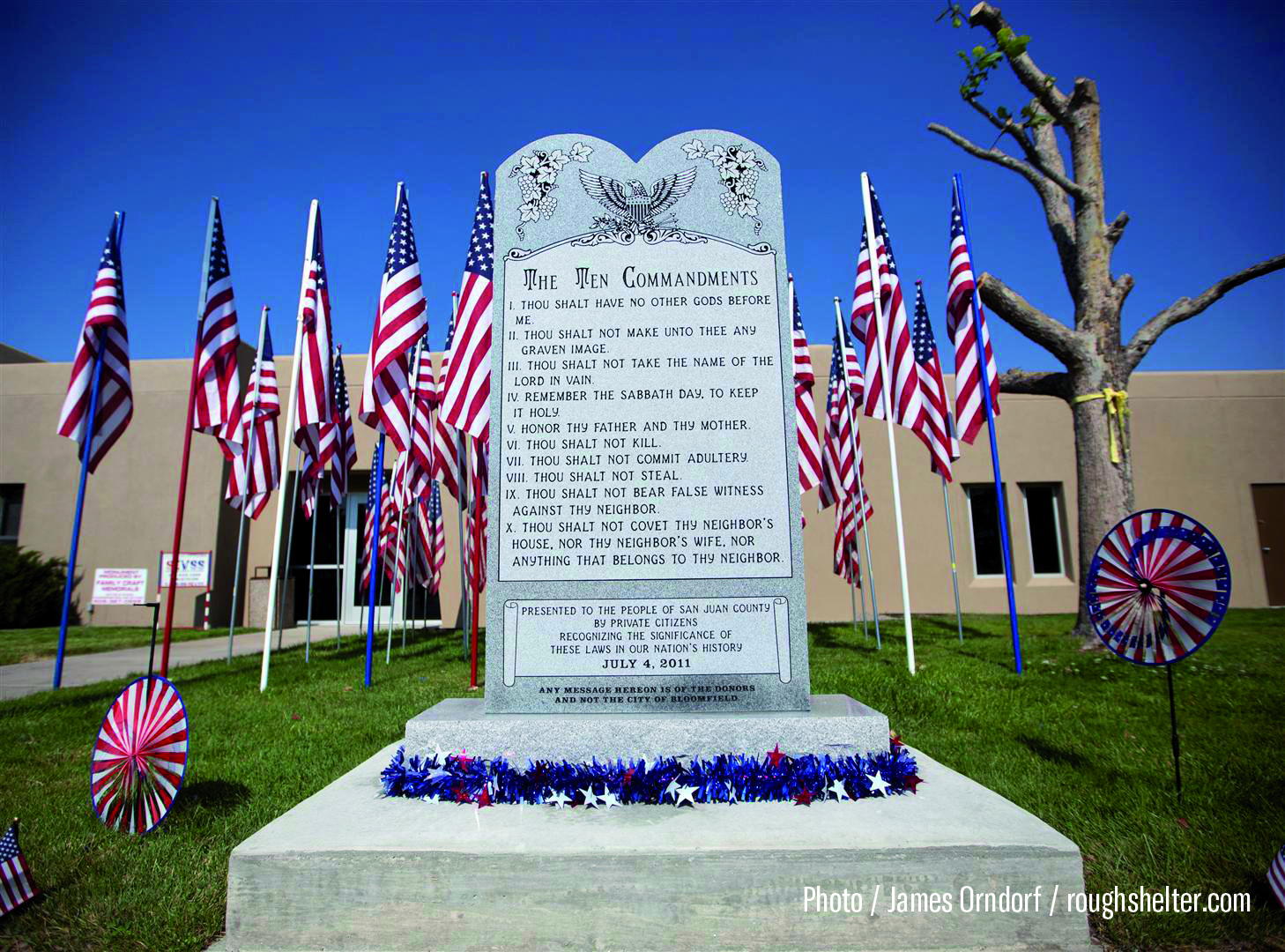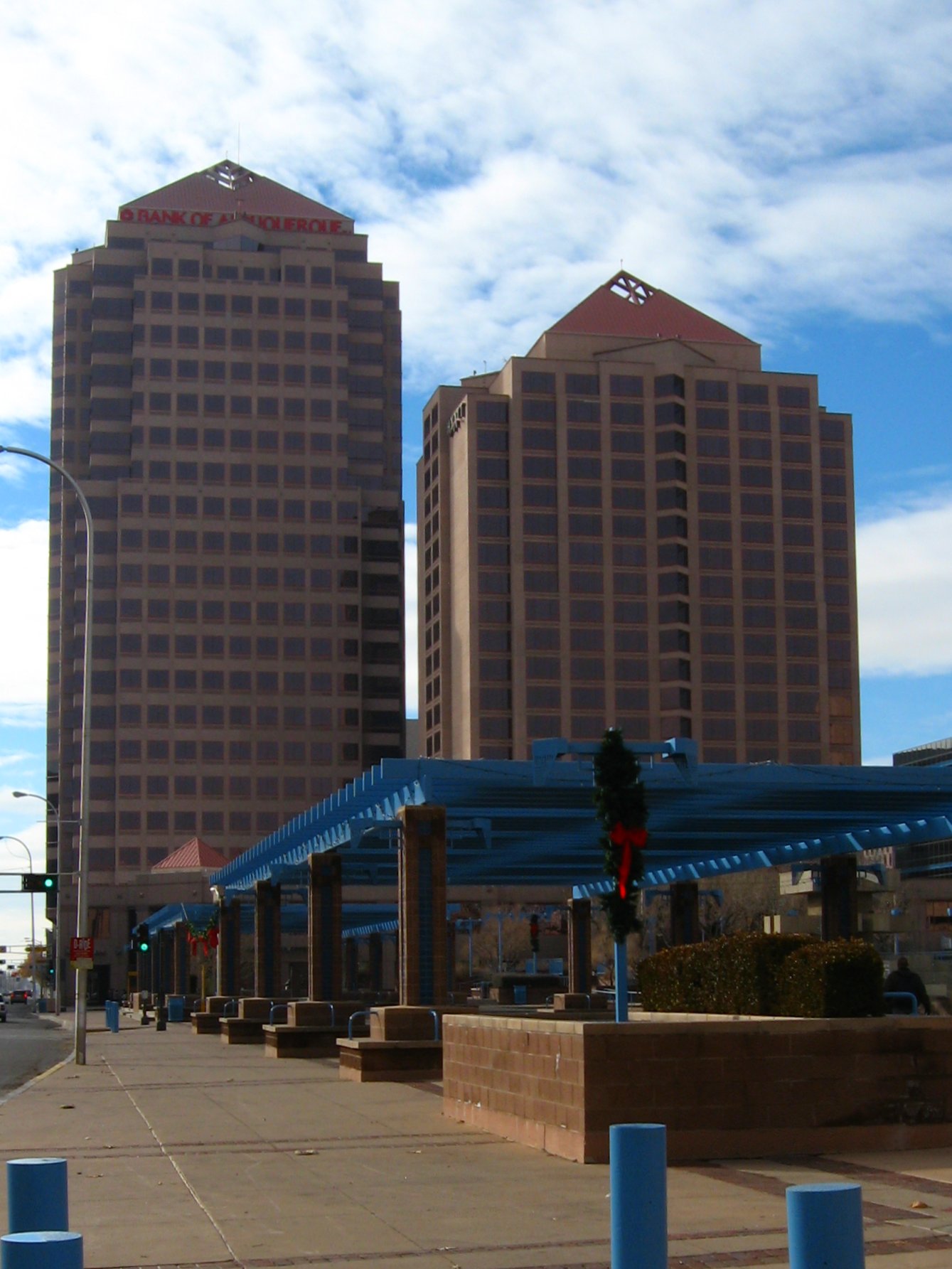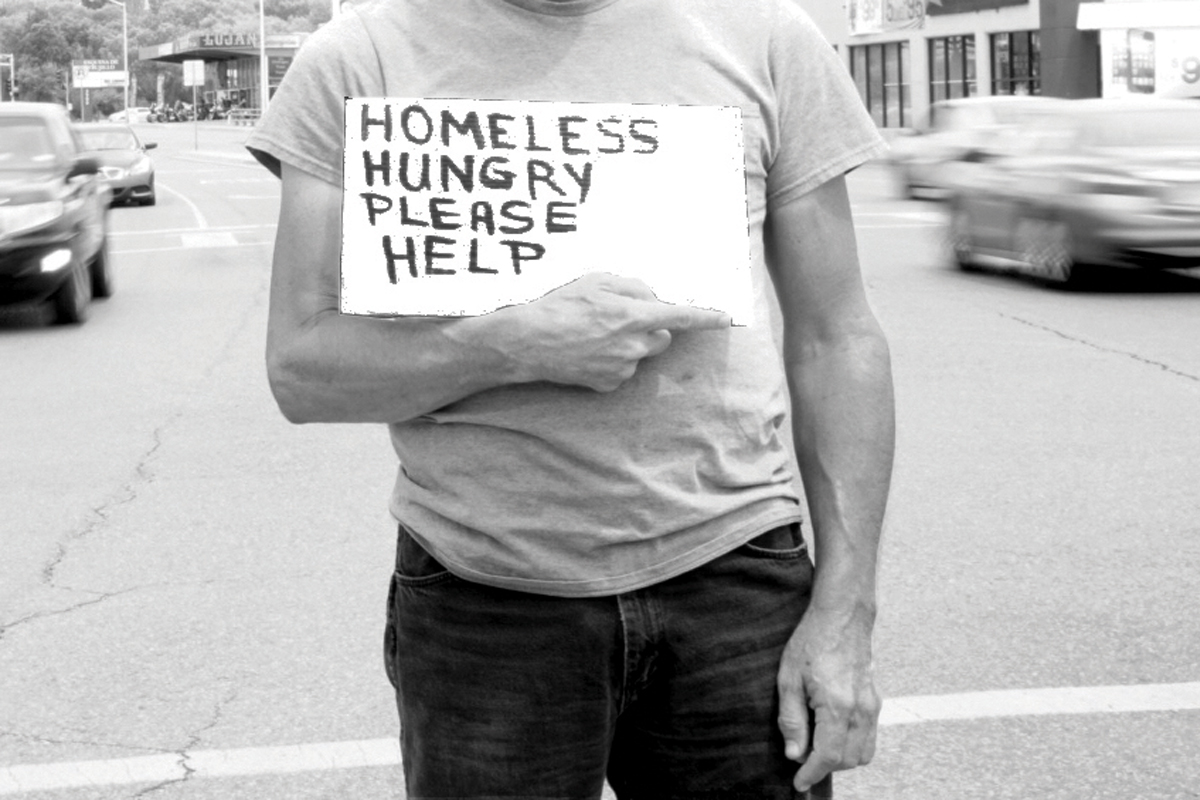After six years of litigation, the ACLU of New Mexico’s Ten Commandments lawsuit, which wound its way from the New Mexico District Court to the very steps of the U.S. Supreme Court, has come to an end. On Monday, October 16, the Supreme Court of the United States announced that it had denied the petition for certiorari in Felix v. Bloomfield, the case we filed in 2012 against the City of Bloomfield after they allowed a five-foot-high granite monument featuring the Ten Commandments (also known as the Decalogue) to be erected on the front lawn of City Hall. After the Supreme Court decides not to hear a case, there’s nowhere else to go. The two lower courts’ rulings on the monument’s unconstitutionality became final, and the city was forced to relocate the monument in November to private property at a nearby church.
The ACLU of New Mexico’s road to the supreme court began back in 2007, when then Bloomfield City Councilor Kevin Mauzy proposed that the City of Bloomfield allow citizens to erect a Ten Commandments monument on the front lawn of Bloomfield City Hall. Despite objections from a number of citizens, Mauzy’s measure was unanimously approved by the council.
Jane Felix, the high priestess of the local Wiccan coven and the named plaintiff in the ACLU’s suit, recalls the fruitless protests she and several dozen other Bloomfield residents registered at the time.
“We had 50 or 60 signatures opposing it, but we think our petition found the circular filing cabinet if you know what I mean,” recalls Felix. “They completely ignored our petition, and when we went to the city council meetings we were shot down by others verbally abusing us.”
When asked at a council meeting as to what religion Bloomfield was endorsing through the proposed monument, Mauzy was reported as saying, “If you don’t like living here, you can go somewhere else.”
Over the next four years, Mauzy gradually raised the necessary funds for the monument from private sources after setting up accounts through two local churches. On July 4, 2011, Mauzy, now off the council, presided over a dedication ceremony for the monument replete with prayer, religious observances, and religiously charged statements. At one point during the ceremony, Mauzy proclaimed:
“Some would believe that this monument is a new thing. They have been so busy trying to remove God from every aspect of our lives that they have overlooked our history. Well, I’ve got news for you, it’s been here all along…You and I are average citizens who believe just like most of our fellow Americans. We want the government to leave us alone and to keep their hands off our money, our religion, our Ten Commandments, our guns, our private property, and our lives…God and his Ten Commandments continue to protect us from our evil.”
Despite Mauzy’s defiant words proclaiming the preeminence of Christianity, the area has long been home to many different faiths and religious traditions, including native religions that predate the arrival of European colonists. The small group of Wiccans that call Bloomfield home have all the same rights and responsibilities that Christian community members enjoy. After the installation of a monument that sent such a clear exclusionary message to her and her coreligionists, Jane Felix felt something had to be done. She also knew that she was one of the few who could actually do something about it.
“Some of us in the Wiccan community are open, but others are in the ‘broom closet’—as we say—because we live in a community that’s highly motivated in its belief that Christianity is the only acceptable religion,” said Jane. “Many Wiccans were afraid to push back because they or a family member worked for the city government and were afraid it would cost them their jobs. As a retired person, that wasn’t really a problem for me.”
Jane and another man in their community, B.N. Coone, reached out to the ACLU of New Mexico and we agreed to represent them in the case. In January 2012, the ACLU of New Mexico filed a lawsuit claiming that the monument represented an unconstitutional government endorsement of religion.
“For me I just want to live in a country where I have freedom of religion and don’t get discriminated against for that religion,” said Jane, recalling her motivation for filing the lawsuit. “The monument was a statement by the City of Bloomfield saying, ‘This is what we endorse.’ It’s one group of people pushing their beliefs on everyone else, and I was just not okay with that.”
A Legal Mess
“Quite frankly, the current law on the constitutionality of Ten Commandments monuments on public property is a mess,” said Andy Schultz, ACLU-NM Board Member and lead cooperating attorney on Felix v. Bloomfield. “There are precedents from the courts that say that the Ten Commandments has secular, legal, and historical value as an early document of law, but of course in the same breath the courts also say that the Ten Commandments has an undeniable religious connotation as well.”
In fact, in 2005 the Supreme Court released two separate and contradictory Ten Commandments decisions on the very same day. In Van Orden v. Perry, the Court ruled that the Decalogue standing outside the Texas state capitol building wasn’t an unconstitutional endorsement because it was part of a larger secular display containing 17 monuments and 21 historical markers celebrating the “people, ideals, and events that compose Texan identity.” The Court also found that, since the monument had stood for 40 years without challenge, few people have interpreted it to indicate an endorsement of religion by the government.
That same day, however, the Court also released a decision in McCreary County v. ACLU that determined that the Ten Commandments display in a Kentucky courthouse failed to serve any secular purpose and therefore constituted an unconstitutional endorsement of religion. Given these conflicting Supreme Court rulings, the lower courts have reached different results when passing on the constitutionality of various 10 Commandments displays around the country. Older displays, that often appear with other historical monuments, have been upheld, while newer displays which are erected for sectarian purposes or over strong community opposition are found unconstitutional.
Given the Supreme Court’s contradictory rulings, those who would like to see the government more closely aligned and identified with the Judeo-Christian faith have sought to test the boundaries of where they can get away with installing Ten Commandments monuments. One of the most prominent of these groups is the Alliance Defending Freedom (ADF), a conservative Christian legal advocacy group that claims to fight for the religious liberty of Christians. Although occasionally the ACLU and ADF are aligned on a particular case, we more often find ourselves facing one another across the courtroom because, according to ADF’s interpretation of religious freedom, Christians have the “right” to discriminate against non-Christians and LGBT people.
Eager for an opportunity to push the limits of Ten Commandments law, ADF offered advice to Mauzy on how the city might construct a monuments policy that could withstand a legal challenge. The group also offered to defend the monument should anyone file a lawsuit seeking its removal. Buoyed by the support of this powerful legal group, the city created a monument policy that established the Bloomfield City Hall lawn as a public forum for the display of privately-funded “historical” monuments—although the policy was never advertised to the public and Mauzy was the only community member to erect a monument under the policy.
When the Decalogue was installed in 2011, Bloomfield placed a sign on the lawn stating that “any message hereon is of the donors and not the City of Bloomfield and does not necessarily reflect the opinions of the City” in a further effort to inoculate itself against legal challenge. In an attempt to provide more legal camouflage, three other monuments were later installed farther back on the lawn that featured the Gettysburg Address, the Bill of Rights, and the Declaration of Independence so that the city could argue that the Ten Commandments was just one of several monuments erected by the “Four Corners Historical Monument Project.”
Showdown in the Courts
Despite the backing of ADF and the great lengths that the City of Bloomfield went to provide a veneer of secular historicalness, the ACLU of New Mexico stripped away any pretense that this monument constituted private speech rather than a government endorsement of religion at trial before a federal district court in 2014.
“In 2011 the front lawn of the city hall was just a blank lawn, it was like a blank canvas,” said Schultz. “They could have put anything they wanted on that lawn, anywhere they wanted, in any order. The city chose to put one thing: the Ten Commandments. Later it was joined by the Gettysburg address and the Bill of Rights, the Declaration of Independence—but they didn’t put any of those first. They also prominently placed the Ten Commandments at the very front of the front lawn right next to the American flag. It gives a very strong impression that this is City Hall saying, ‘This is what we believe in.’ That isn’t a question of history, that’s a question of telling non-Christians that they are not welcome.”
During the cross-examination of Kevin Mauzy, the ACLU even got him essentially to admit that his motivations for installing the monument were religious in nature. When asked the simple question, “Do you believe this lawsuit is an attack on your religious liberty?” Mauzy considered for a long moment and replied, “Yes, I believe I do.”
If his motivation for erecting a monument to the Ten Commandments at Bloomfield City Hall was purely secular and historical in nature, how could our lawsuit possibly be an attack on his religious liberty?
When presented with all of the evidence—the fundraising through churches, the sham open forum, the preferential placement of the Decalogue, and the religious dedication ceremony—Judge James Parker determined that the monument was an unconstitutional endorsement of religion. He concluded:
“…The Ten Commandments monument is government speech regulated by the Establishment Clause because the Ten Commandments monument is a permanent object located on government property and it is not part of a designated public forum open to all on equal terms…In view of the circumstances surrounding the context, history, and purpose of the Ten Commandments monument, it is clear that the City of Bloomfield has violated the Establishment Clause because its conduct in authorizing the continued display of the monument on City property had the primary or principal effect of endorsing religion.”
Undaunted by their loss at the district level, the City of Bloomfield and Alliance Defending Freedom appealed to the Federal 10th Circuit Court of Appeals, where we argued the case again before a three judge panel in 2016. The 10th Circuit unanimously upheld the District Court decision, agreeing that the Ten Commandments monument constituted a government endorsement of religion. Finally, the City of Bloomfield filed a petition asking the United States Supreme Court to review the appellate court’s holding. The Court denied the city’s petition in October 2017, thus leaving in place the lower courts’ rulings that the 10 Commandments erected in front of the City of Bloomfield’s Town Hall violated the Establishment Clause of the First Amendment.
Why it Matters
A lot of people—usually those belonging to the religious majority—don’t get why these types of cases are important. We often hear variations of, “What’s the big deal? Why shouldn’t a majority Christian town be able to put up a Ten Commandments monument at City Hall? If people don’t like it, they don’t have to look at it.”
We are too apt to forget why our nation’s founders were so intentional about preventing our government from ever endorsing or sponsoring a religion. Many of the first Europeans to arrive in what is now the United States came fleeing persecution by a state-sponsored religion. For more than a hundred years the European Wars of Religion left an entire continent devastated by conflict and civil war. This was all still fresh in the minds of the men who put pen to page and wrote “Congress shall make no law respecting an establishment of religion, or prohibiting the free exercise therof…” into the very first amendment to our constitution.
Putting a religious monument on public property may be many steps away from civil war or burning heretics at the stake, but it is still a significant step away from the ideals of religious freedom our country was founded on. Our country is home to many diverse and vibrant religious traditions that are an important part the lives of millions of Americans, and a growing number of Americans identify with no particular religion at all. The government should never be in the business of deciding which set of beliefs should be favored above all others. Our victory in the Bloomfield Ten Commandments case helps enshrine this principle even more strongly within our laws, and will make it harder for other towns and governments to use “historical monuments” as a fig leaf for the endorsement of religion.
But on a more personal level, this case matters because now people like Jane Felix can pay their water bill at city hall without feeling that their personal religious beliefs make them a second-class citizen.
“I feel justice was served,” said Jane, reflecting on the legal battle that took her from Bloomfield, NM all the way to the steps of the U.S. Supreme Court. “I feel that the ACLU supported a cause that is important to many of us, and I’m proud to be part of that. The monument was actually moved to a location within the city that is more prominent that the City Hall lawn, but I’m okay with that because it’s no longer on city property. It belongs on private property, and now that’s where it is.”


